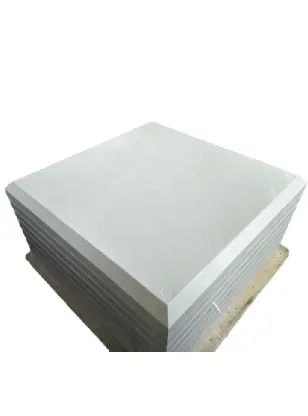loading...
- No. 9, Xingyuan South Street, Dongwaihuan Road, Zaoqiang County, Hengshui, Hebei, China
- admin@zjcomposites.com
- +86 15097380338
- Welcome to visit our website!
FRP Water Softener Tank for Efficient Water Treatment Solutions
Understanding FRP Water Softener Tanks
Water quality is an essential concern for both domestic and industrial applications. Hard water, which contains high levels of minerals such as calcium and magnesium, can lead to various problems, including scale build-up in pipes and appliances, reduced efficiency of soaps and detergents, and unsightly stains. To combat these issues, water softeners have become increasingly popular, and among them, Fiber Reinforced Plastic (FRP) water softener tanks are gaining recognition due to their durability and efficiency.
What is an FRP Water Softener Tank?
An FRP water softener tank is a container designed to house the resin used in the ion exchange process that softens water. The construction material, fiber-reinforced plastic, provides numerous advantages over traditional materials like steel and PVC. FRP is composed of a polymer matrix reinforced with fibers, typically glass, enhancing its strength, corrosion resistance, and longevity.
FRP tanks are available in various sizes and configurations, making them suitable for different applications — from residential homes to large industrial sites. They not only handle the demands of softening hard water but also stand up well to various environmental conditions.
Advantages of FRP Water Softener Tanks
1. Corrosion Resistance One of the primary benefits of FRP tanks is their resistance to corrosion. Unlike metal tanks that can rust over time, FRP tanks are immune to the corrosive effects of water and chemicals. This characteristic significantly extends the lifespan of the tank and reduces maintenance costs.
2. Lightweight and Easy to Install FRP tanks are much lighter than their metal counterparts. This ease of handling not only makes installation simpler but also reduces transportation costs. Their design allows for easy integration into existing water systems.
3. Strength and Durability The fibers used in FRP tanks add considerable strength to the structure, making them capable of withstanding high pressure. They are less prone to denting or deformation, which is essential given that water softeners often operate under significant pressure during the ion exchange process.
4. Cost-Effectiveness Although the initial investment in an FRP tank may be higher than that for traditional tanks, the long-term savings from reduced maintenance and replacement needs make them a cost-effective choice. Their durability translates to fewer replacements and repairs, ultimately saving money over time.
5. Insulation Properties FRP tanks provide excellent insulation from temperature fluctuations. This quality is beneficial in regions with extreme weather, as it protects the system from freezing temperatures and maintains optimal performance throughout the year.
Applications of FRP Water Softener Tanks
frp water softener tank

FRP water softener tanks can be utilized in various applications
- Residential Use Homeowners benefit from soft water for washing, cooking, and bathing, improving their quality of life. The softening process helps prevent damage to plumbing systems and appliances, such as dishwashers and water heaters.
- Commercial Use Restaurants, hotels, and laundromats often rely on soft water for their operations. The use of FRP tanks helps ensure consistency and efficiency in cleaning and laundry processes.
- Industrial Applications Manufacturing facilities often need high-quality water for production processes. FRP tanks can be employed in industries such as textiles, pharmaceuticals, and food processing to maintain the required water quality standards.
Maintenance Tips for FRP Water Softener Tanks
While FRP tanks require less maintenance than traditional tanks, certain practices can enhance their longevity and performance
- Regular Inspection Periodically check the tank for any signs of wear or damage. Look for leaks or cracks that might compromise the system.
- Monitor Water Quality Keep testing the water quality to ensure the softening process is working efficiently. Regular testing can help identify issues before they escalate.
- Replace Resin as Needed Over time, the ion-exchange resin used in softening will become exhausted. It is important to know when to replace this resin to maintain water quality.
Conclusion
In summary, FRP water softener tanks offer a modern solution to the problems associated with hard water. Their unique advantages make them an ideal choice for various applications, bringing efficiency and long-lasting performance to water treatment. By investing in an FRP tank, consumers and businesses alike can ensure the consistent delivery of soft water, leading to improved quality of life and operational efficiency.
-
The Rise of FRP Profiles: Strong, Lightweight, and Built to LastNewsJul.14,2025
-
SMC Panel Tanks: A Modern Water Storage Solution for All EnvironmentsNewsJul.14,2025
-
GRP Grating: A Modern Solution for Safe and Durable Access SystemsNewsJul.14,2025
-
Galvanized Steel Water Tanks: Durable, Reliable, and Ready for UseNewsJul.14,2025
-
FRP Mini Mesh Grating: The Safer, Smarter Flooring SolutionNewsJul.14,2025
-
Exploring FRP Vessels: Durable Solutions for Modern Fluid HandlingNewsJul.14,2025
-
GRP Structures: The Future of Lightweight, High-Performance EngineeringNewsJun.20,2025
